May 1–31, 2023
TEFAF New York 2023
Preview
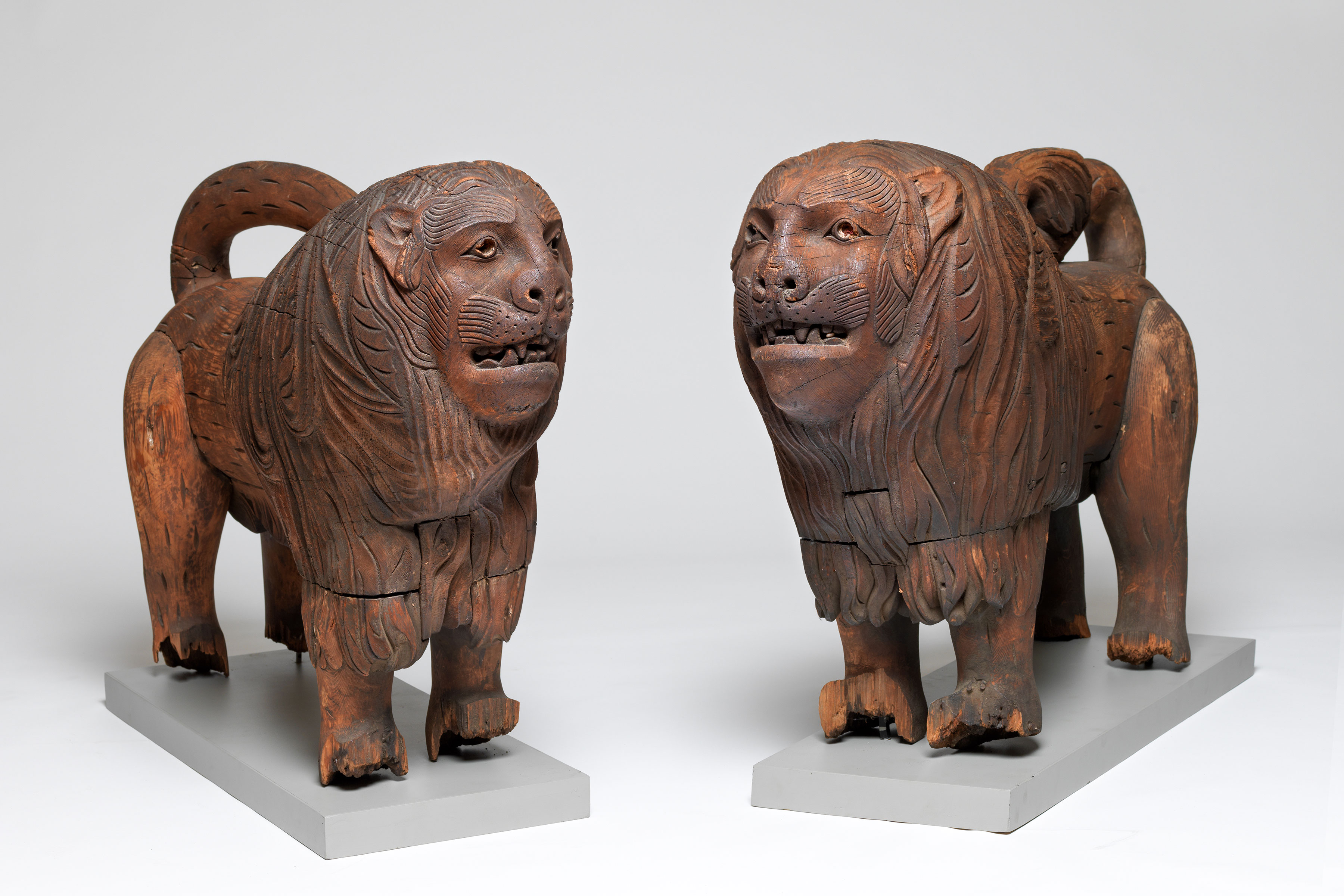
Donald Ellis Gallery will be exhibiting at TEFAF New York Spring 2023, held at the Park Avenue Armory, May 12-16, with an invitation-only preview on Thursday, May 11.
The gallery will present an extraordinary group of 19 drawings by Cheyenne warrior artist Nokkoist (Bear's Heart, 1851-1882) created during his incarceration at Fort Marion, Florida, in 1876. Remarkable in their seamless provenance, they constitute the most significant body of 19th century Plains pictographic work ever to come to the market.
The gallery will also exhibit an important selection of 32 works of historical Indigenous sculpture, including a number that were created for sale to Euro-Americans. Highlights include a rare pair of carved monumental Haida lions, ca. 1840, likely commissioned by a military officer or an Anglican minister; an outstanding collection of beautifully carved model totem poles, several of which are attributed to known artists; and an exceedingly rare model Great House by Haida artist John gwaay t’iihld (1813-1912) that was likely commissioned for the Columbia World Exposition in Chicago in 1893.
Northwest Coast carvers were occasionally asked to produce specific items or objects, such as house or totem pole models, or as in this case, a matched pair of African lions (British style). Working most likely from a photograph or book illustration, the artist has rendered a totally foreign subject in a manner that combines naturalism with traditional Northwest Coast design elements. The only known example of its type, this outstanding pair of carvings presents a somewhat startling and engagingly benign personification of a powerful carnivore.
Model Carvings
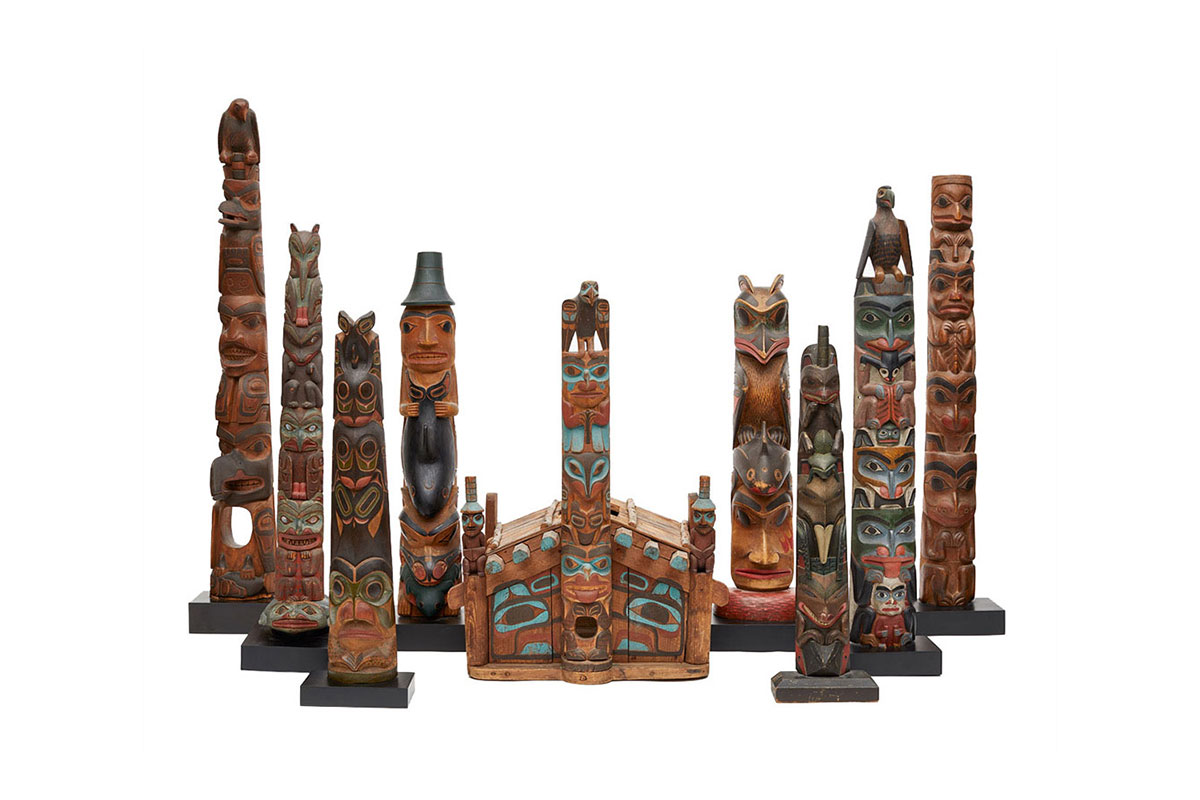
Model Totem Pole
attributed to John Cross, 1867-1939Haida
Haida Gwaii, British Columbia
Model Carvings
Haida carvers began making models of large-scale totem poles, and more rarely houses, in response to interest from outside buyers beginning in the second half of the nineteenth century, a period widely considered the “Golden Age” of Northwest Coast art. Among the most highly skilled carvers of their time were John gwaay t’iihld, Charles Edenshaw, John Robson, Tom Price, and Simeon Stilthda. Many of these works present miniatures of larger standing poles, while others reflect a combination of new images. Model houses were primarily commissioned by field collectors for museums back East, most notably by James Dean for the Columbia World Exposition in Chicago in 1893.
Of the known body of house models only three, including the present example, can be attributed to the master carver John gwaay t’iiild. The work can be seen with its maker in a photograph provided to the British Museum by the Reverend Keen in 1893. Although these artists never signed their works each had distinctive stylistic traits that make artistic attributions possible, if at times debated. It is highly unusual, as we see here, to see an artist actually photographed with their work. Moreover, this example appears to be the only house model remaining in private hands.
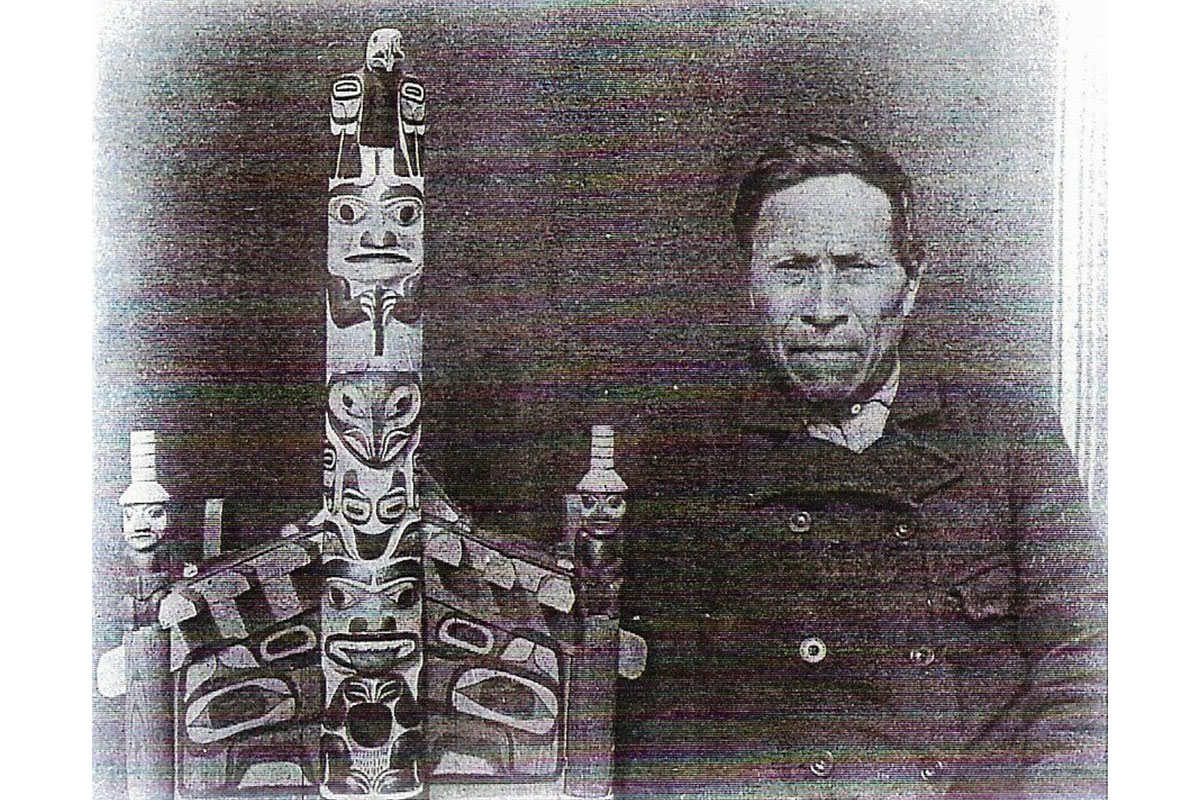
Fort Marion Drawings
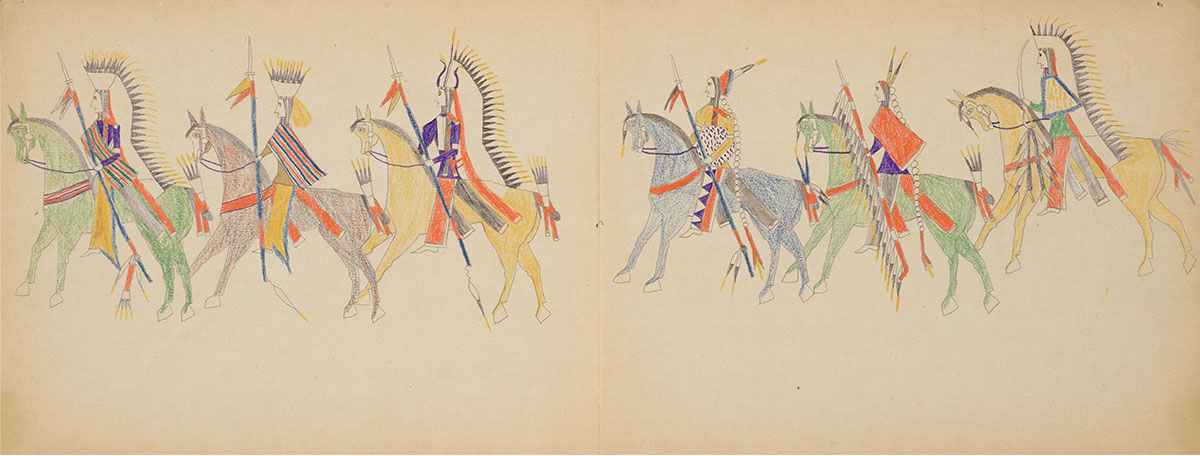
Cheyenne Warrior Procession, Nokkoist (Bear's Heart, 1851-1882), Bear's Heart Drawing Book, Cheyenne, Central Plains, ca. 1876,
ink, graphite and coloured pencil on paper, 8 ⅝" H × 22 ¾" W
Cheyenne Women Dancing
recto: Nokkoist (Bear's Heart), 1851-1882; verso: Ohettoint, 1852-1934Bear's Heart and Ohettoint Drawing Book
Cheyenne, Kiowa
Central Plains
Observing the Sun Dance
Nokkoist (Bear's Heart), 1851-1882Bear's Heart Drawing Book
Cheyenne
Central Plains
Captain Pratt and Bishop Whipple Addressing the Prisoners
Nokkoist (Bear's Heart), 1851-1882Bear's Heart Drawing Book
Cheyenne
Central Plains
Fort Marion Drawings
The present group of drawings constitutes the most significant body of 19th century Plains pictographic work ever to come to the market. Alongside their outstanding provenance, they form an unprecedented opportunity to view the compelling artistry of Plains warriors at the turn of the century. Created by Cheyenne warrior artist Nokkoist (Bear's Heart) during his incarceration, without trial, at Fort Marion in St. Augustine, Florida, they stand at the very beginning of the widespread cultural assimilation efforts that shaped U.S. policies for almost one and a half centuries. In stark contrast to mainstream narratives, drawings from Fort Marion speak to these experiences from an Indigenous point of view. The position of the artist is unique: standing at a crossroads from one dominant way of life to another, the images reflect on the deep transformation their nations were in the process of undergoing.
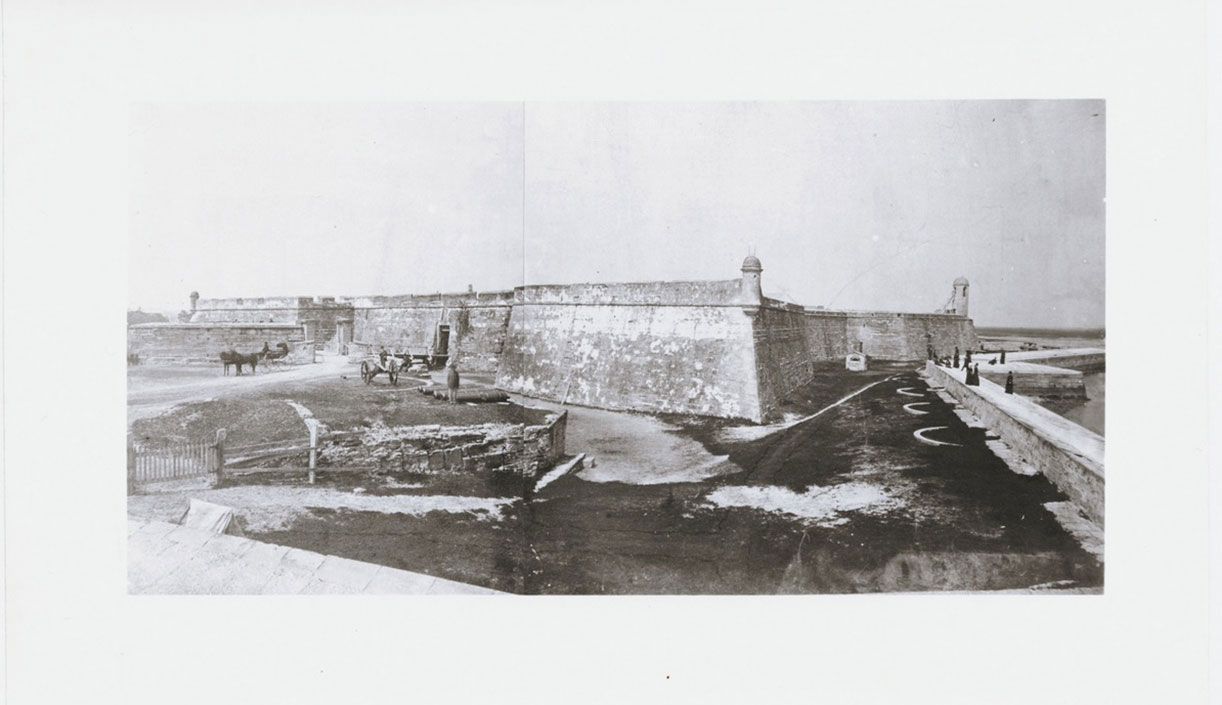
Inside Fort Marion, St. Augustine, FL
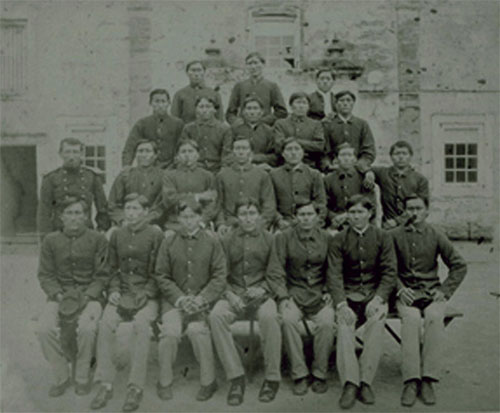
Richard Henry Pratt and Native American prisoners at Fort Marion, ca. 1878, Nokkoist is pictured third row, first from left © National Anthropological Archives, Smithsonian Institution
The present drawings are remarkable in their seamless provenance. As an experiment in penal reform, the fort commander Richard Henry Pratt provided a small group of prisoners with paper, ink, graphite and coloured pencil, encouraging them to create drawings on paper which were in turn sold to tourists and gifted to like-minded reformers. This body of work was gifted by Capt. Pratt to Bishop Henry Benjamin Whipple (1822-1901) in 1876. Bishop Whipple, a fellow advocate of penal reform, dedicated the drawing s to his wife Evangeline Marrs Simpson Whipple (1857-1930), from whose estate they were acquired by Chicago industrialist Roy Henry Robinson in 1933.
Nokkoist was among the most accomplished of this group of warrior artists at Fort Marion. While the majority of Plains pictographic drawings express the accumulation of power and prestige by rendering the exploits of a single warrior figure, Nokkoist’s drawings from Fort Marion depict specific scenes, including the arduous journey from Oklahoma Territory to Fort Marion in Florida by horse cart, sailboat, and train as well as his everyday life inside the fort. By contrast to the strict monotony of military routine, his renderings of Plains nations abound with vibrancy, prowess and visual splendour. These images contain a visual vocabulary that encompasses Indigenous ways of being and knowing the world at the height of military and political pressure for their erasure. Uniquely placed at the intersection of art, documentary and storytelling, the importance of Fort Marion drawings in preserving and recounting the shared histories of Plains nations and the U.S.A. cannot be overstated.
Pawnees
Nokkoist (Bear's Heart), 1851-1882Bear's Heart and Ohettoint Drawing Book
Cheyenne
Central Plains
Warrior Procession
Nokkoist (Bear's Heart), 1851-1882Bear's Heart and Ohettoint Drawing Book
Cheyenne
Central Plains
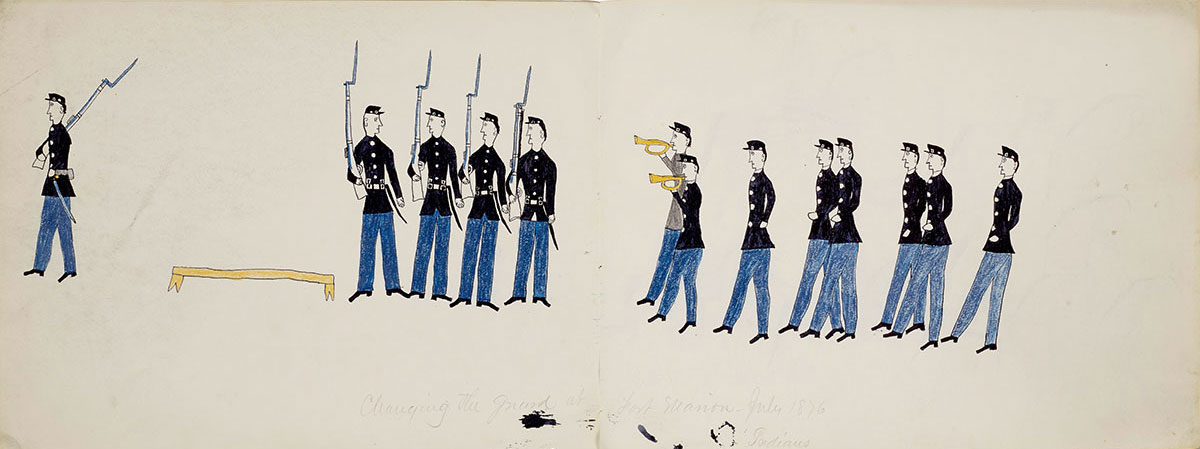
Changing the Guard at Fort Marion, Nokkoist (Bear's Heart, 1851-1882), Bear's Heart and Ohettoint Drawing Book, Cheyenne, Central Plains, ca. 1876,
ink, graphite and coloured pencil on paper, 8 ⅝" H × 22 ¾" W
The Goodwyn Ledger Drawings
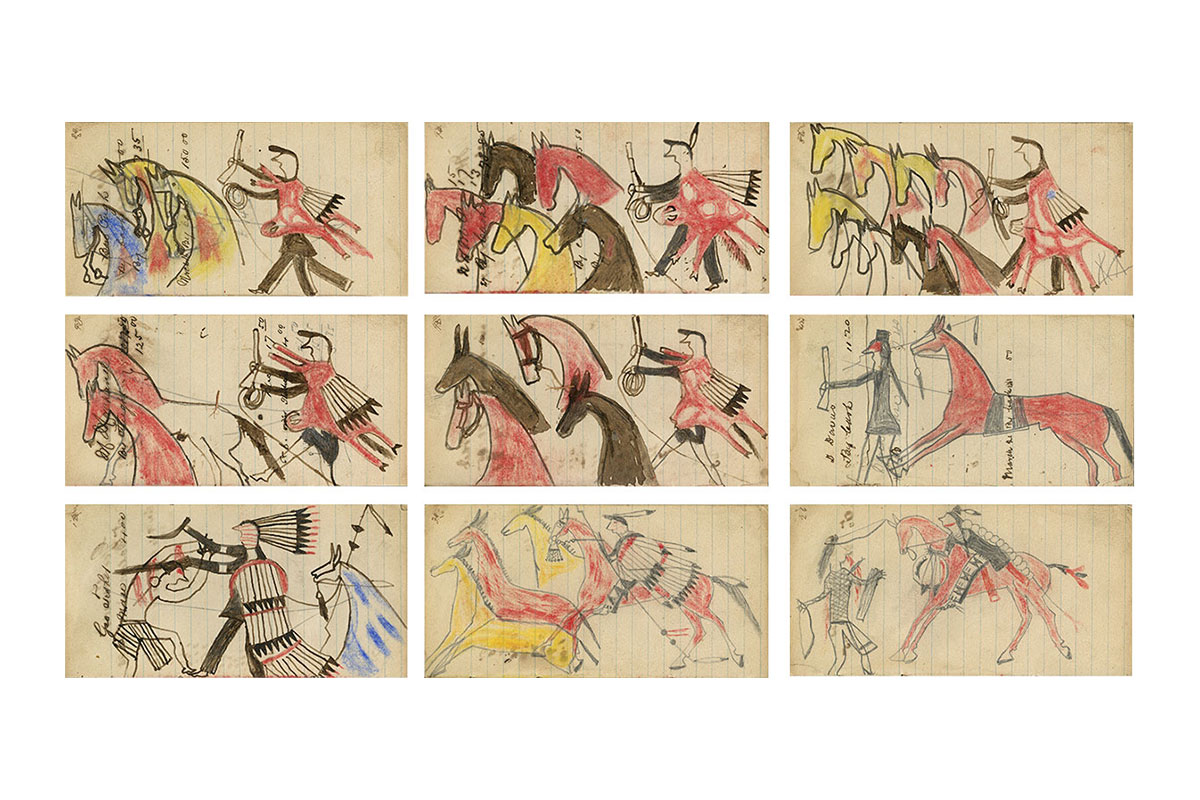
The Goodwyn Ledger Drawings
The Goodwyn Ledger Drawings are the only known and documented series of Ledger Drawings originating from the geographic region of Canada. The images were created by several Lakota and Cheyenne warrior artists in the Wood Mountain Uplands, Saskatchewan in the late 1870’s. The images directly reflect a series of violent encounters with the U.S. military in Dakota Territory which had prompted a group of approximately 5,000 Native Americans to evacuate across the border to Canada guided by Hunkpapa Lakota leader Sitting Bull following the Battle of the Little Bighorn/Greasy Grass in 1876. The Goodwyn drawings thus manifest acts of war and resistance that implicate Canada and the U.S. in the very moment of their respective formations. In stark contrast to mainstream narratives, however, they capture events from an Indigenous point of view. Uniquely placed at the intersection of art, documentary and storytelling, the importance of the Goodwyn Ledger Book in preserving and recounting the shared histories of the Lakota and Canadian nations cannot be overstated.



















